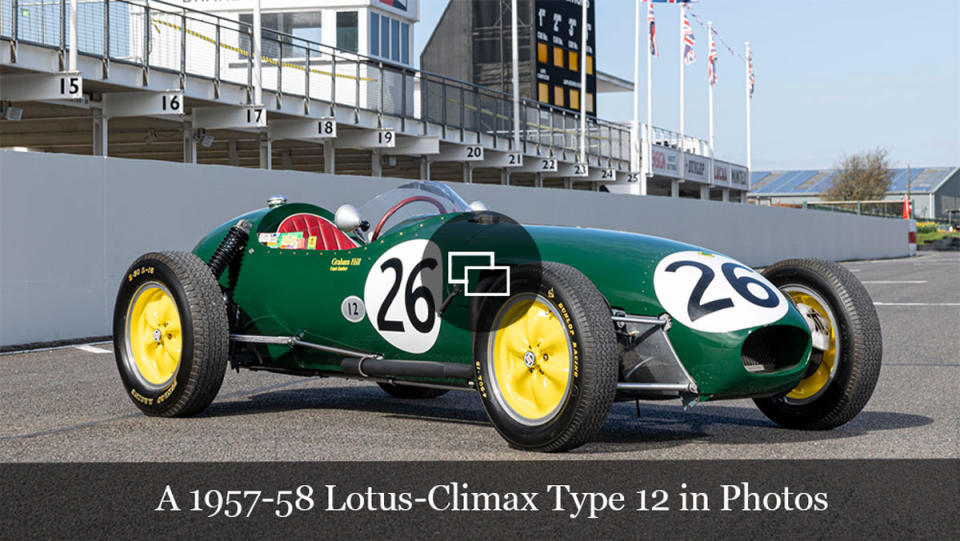Car of the Week: The First F1 Lotus Race Car Is Heading to Auction in Monaco
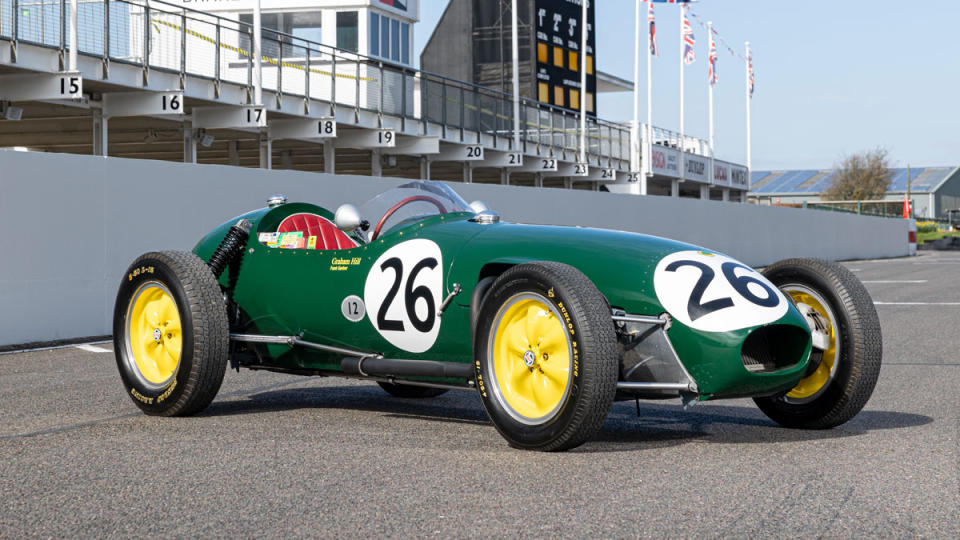
Lotus is a name inextricably woven into Formula 1 history, going back to 1957. The British marque, a David among Goliaths, has won the title seven times, and its initial foray into the premier race series was with the Lotus-Climax Type 12, chassis No. 353. That very first Lotus Formula 1 race car comes to the Bonhams “Le Grandes Marques à Monaco” sale on May 10 in Monte Carlo.
Piloting the car during its heyday was Graham Hill, who would eventually become a five-time Monaco Grand Prix winner and two-time winner of Formula 1’s World Drivers’ Championship. Hill drove for Lotus that year in the important Monte Carlo race, having previously spent time behind the wheel of this car during the Silverstone 1958 BRDC (British Racing Drivers’ Club) International Trophy race in his Formula 1 debut.
More from Robb Report
F1's Owner Just Struck a $4.5 Billion Deal to Take Over MotoGP
Car of the Week: This 1938 Bugatti Is an Art-Deco Dream That's Now up for Grabs
NASCAR Team Owner Rick Hendrick on EVs, Hybrids, and the Future of Classic Cars
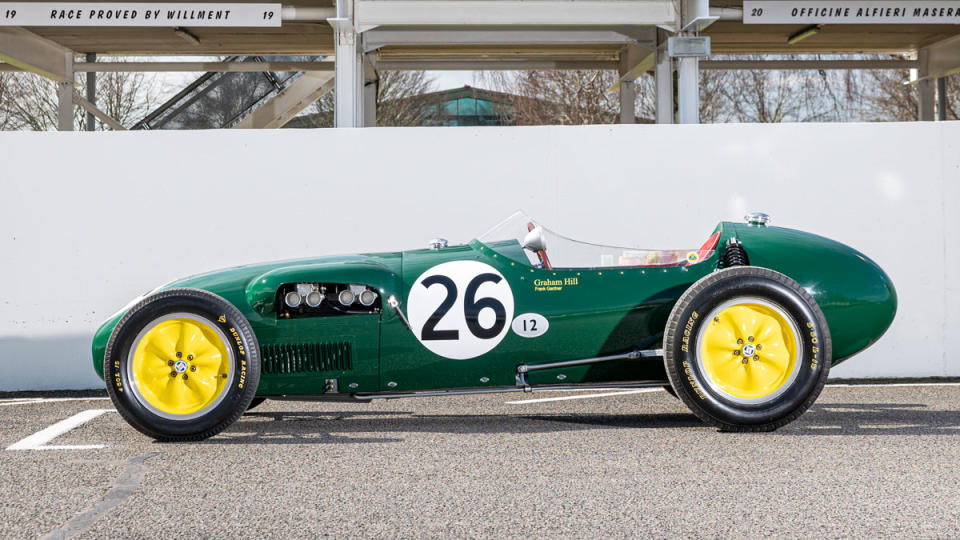
On the track, works-team cars have taken six of Lotus’ seven Formula 1 Constructors’ World Championship titles, with some of motorsport’s greatest drivers in the cockpit: Graham Hill, Jim Clark, Jochen Rindt, Emerson Fittipaldi, and Mario Andretti. Then, of course, names such as Ayrton Senna, Stirling Moss, and Ronnie Peterson clinched other victories, among no fewer than 74 Formula 1 Grand Prix wins for Lotus.
It all began with the automaker’s first production car, the Mark VI, made from 1953 through 1955. The Mark VI was followed by a series of lightweight sports racers such as the Lotus Seven and Eleven, which went on to become among the most revered models from Lotus. The marque’s founder, Colin Chapman, designed the company’s first single-seat race car in 1956.
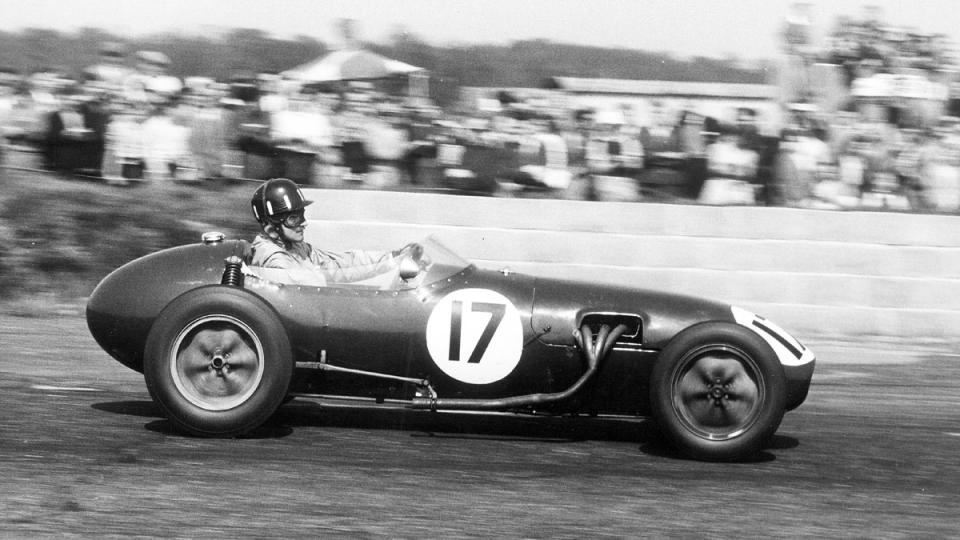
The Type 12 was aimed at the Formula 2 class for 1957. Seven examples were built that year, five of them entered by the works team. In 1958, Formula 1 premier class regulations allowed engines of up to 2.5-liter displacement. Without the budget for a top-displacement engine, Chapman used the original 1.5-liter Coventry Climax F2 engine, enlarged to nearly 2.0 liters for his Formula 1 entry. The small engine acquitted itself on twisty tracks, with Hill placing seventh in Lotus’ debut.
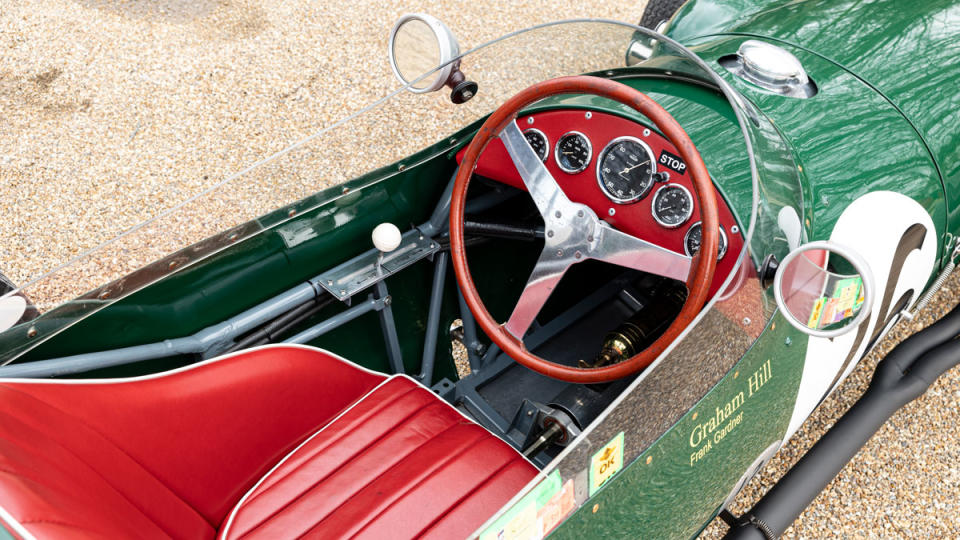
This specific car has a lighthearted story attached to its history of serious track accomplishments. The era’s most popular European racing journalist was Denis Jenkinson, a British writer for Motor Sport. He was noted for his Formula 1 coverage and, famously, as the navigator for Stirling Moss in their record-breaking victory in the 1955 Mille Miglia race driving the Mercedes-Benz 300 SLR. “Jenks” was intent on driving a single-seat racer on one of Britain’s public roads, and he’d been loaned chassis No. 353 by Chapman to drive on Christmas Day, 1957, when many of the roads of Hampshire would be mostly deserted. The stunt has since been called the “Figgy Pudding Grand Prix,” as the race car broke down—as such things do—while driving. Wishing to remain out of sight of the constabulary, Jenks surprised a family enjoying Christmas lunch, coasting up their private driveway unannounced.
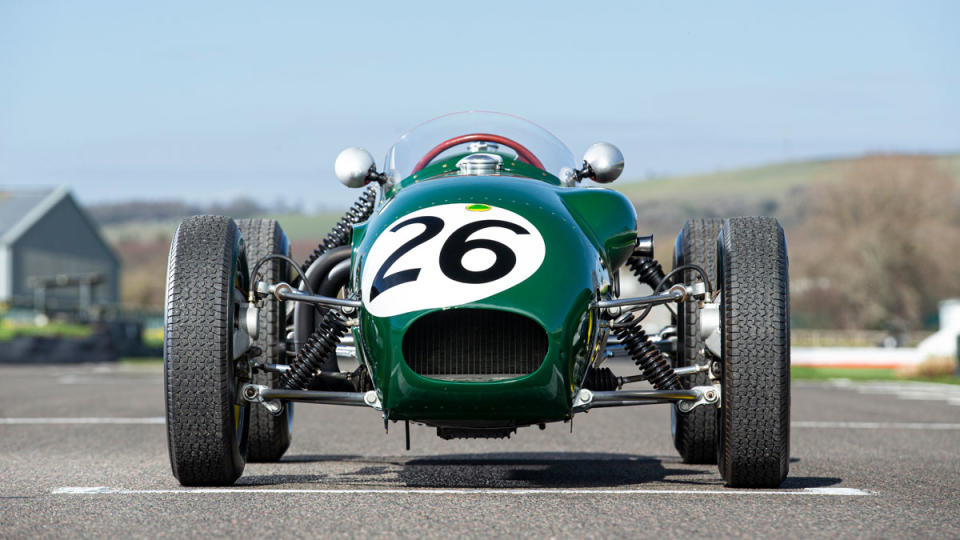
Race cars, like yesterday’s news, quickly get old, and Lotus “353” was sold to British private entrant John Fisher, who campaigned it in 1959 with drivers including Italy’s star female racer, Maria Theresa de Filippis, the first woman to race in Formula 1. Chassis No. 353 was subsequently acquired by a succession of Australian owners, remaining largely original until being fully restored by the current consignor.
The vehicle is the subject of the aptly titled book Lotus 12 Chassis No. 353: The History (2006) by Michael J. Bennet and Mike Bennet. This storied racer carries a high-end estimate of about $420,000, which doesn’t seem to be a terribly large sum for such a significant motorsport icon.
Click here for more photos of this 1957-58 Lotus-Climax Type 12 race car.
Best of Robb Report
Sign up for Robb Report's Newsletter. For the latest news, follow us on Facebook, Twitter, and Instagram.
